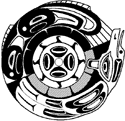
Navigating the Night Sky:
Planetarium show for Middle/High School Children
Post-Show Activity 2
Stars and Constellations
Objectives:
- Students will identify five major constellations.
- Students will explain the mythological history of five major constellations.
- Students will demonstrate the motions of the stars in the night sky and identify some of the constellations of the northern sky.
- Students will explain the movement of the stars in the night sky.
- Students will state basic elements of space.
Grade Level
6-8
Materials
- Constellation pictures
- Umbrellas
- Glow-in-the dark stars
- Star charts
- Star and constellation books
Background
Students will learn through hands-on activities about various stars and constellations. They will also learn mythological background pertaining to some constellations. The purpose of this lesson is to give students a basic understanding about stars and constellations. This will also enable students to identify stars and constellations in the night sky.
Procedure
- Scientific Explanation:
What are stars? Stars are hot rotating balls of gas that creates their own light. What are constellations? Constellations are patterns of stars in the sky. What do you think the constellations Ursa Major, Draco, Pegasus, Hercules, and Cassiopeia look like in the night sky?
Focus Phase:
Plot the stars of each constellation on the board and have the students draw what pictures they think the five constellations (we are focusing on) look like. Have students share their pictures with the class. Ask the students why they think everyone has a different picture.
Challenge Phase:
Who can tell me how the stars move in the night sky? Distribute one umbrella per group and one package of glow in the dark stars. Have the students begin placing stars in the patterns of the major constellations. When all groups are finished, turn the overhead lights off and have students turn umbrella counterclockwise. Explain to students that this motion is simulating the motions of the night sky.
Concept Introduction:
What were the students' results of the activity? Have students share their results from the sky umbrella with the rest of the class. Discuss in further detail what stars and constellations are and where they come from. Where does a star's brightness and luminosity come from? Discuss other constellations and show where they appear in the northern sky.
Concept Application:
Show students actual star charts, and explain how they are used to locate stars in the night sky. Ask students to continue this activity at home during the evening hours. Ask them to explain to their family what they learned and locate as many constellations as they can. Have them journal what they observed.
Follow Up
The students will demonstrate understanding by verbally explaining what stars and constellations are and where they come from and showing journal entries from previous night of stargazing.
Source:
AskERIC lesson plan #AELP-AST0027
Author: Denise Mercer and Suzanna Pederson
Date: April 6, 2000


 © 1999 University of Washington
© 1999 University of Washington
Revised: 9 August, 2000
